
15 Best Hacks For Landscaping With Hostas And Daylilies
Published: 20/02/2023 | Updated: 31/05/2023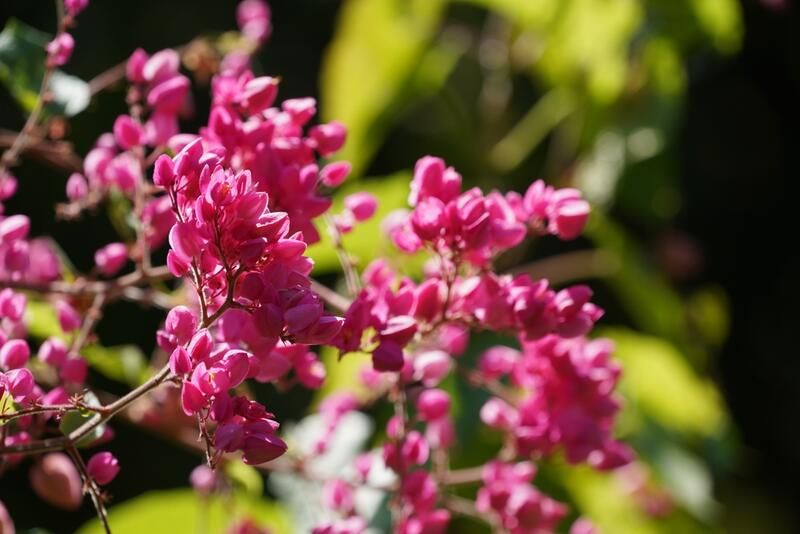
If you're looking for plants that are easy to grow, low-maintenance, and durable, then hostas and daylilies are a perfect choice.


But what exactly are these perennials? Hostas are a shade-loving perennial that's native to Japan. They have large leaves that can grow up to 18 inches long and thrive in moist soil.
Daylilies come from China where they were first cultivated by monks who used them as ornamental plants in their gardens. These versatile flowers bloom for only one day each year but produce multiple blooms during this period.
By pairing these two perennials together in your garden, you'll be creating an elegant landscape with minimal effort! In this article, we'll tell you about 15 landscaping hacks for using hostas alongside daylilies to create an exquisite garden!
Why Do Daylilies Make Perfect Hosta Companions?
Before we get started without a list, let us tell you why did we choose daylilies instead of other hosta companion plants:
-
Hostas and daylilies are both shade-loving plants.
-
They are also both perennials, which means that they come back every year to grow new leaves and flowers.
-
Some varieties of hostas can be planted in full sun, but the best place for them is a forested area with some sunlight coming through the trees.
-
Daylilies do well in partial shade to light shade, depending on how much sun your particular garden receives each day.
-
Hosta plants tend to be shorter than daylilies, but they also have beautiful large leaves that will add more green color to your garden as well as provide a great deal of privacy.
-
Daylilies cost less than $10 per plant at most nurseries or home improvement stores, making them a very affordable option for homeowners looking for affordable and low-maintenance landscaping ideas!
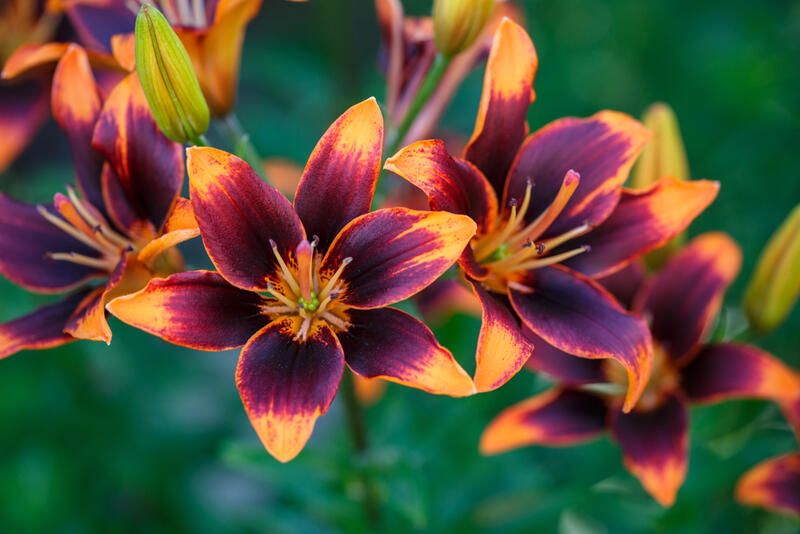
1. Use Hostas and Daylilies in a Shade Garden
Hostas and daylilies are the perfect perennials for shade gardens. These shade-loving shrubs grow well in areas with partial to full shade, so they'll be happy in your shady backyard or even in your front yard if you're lucky enough to have some trees blocking the sun.
These companion plants have beautiful foliage that looks great at all times, plus hosta foliage comes in a huge variety of different colors, sizes, and shapes!
Hostas are also very easy to grow because they don't require much attention at all once they're established. Daylilies are also pretty low maintenance—all you need is some water now and then.
2. Consider Planting Your Shade Loving Perennials in Containers
Hostas and daylilies are ideal choices for container gardening! Hostas are an especially great choice because they don't grow very tall, so you can easily fit them in a container that's about 10 inches deep.
This is also great if your garden has limited space for growing greenery. This way you can move them around as needed so that nothing gets blocked by other plants or grasses (which may be beneficial depending on what types of flowers or vegetables).
They'll also thrive right alongside other flowers like petunias or annuals while adding extra interest through their unique foliage colorations. There's nothing quite like sitting out on your porch admiring those beautiful blooms while drinking lemonade.
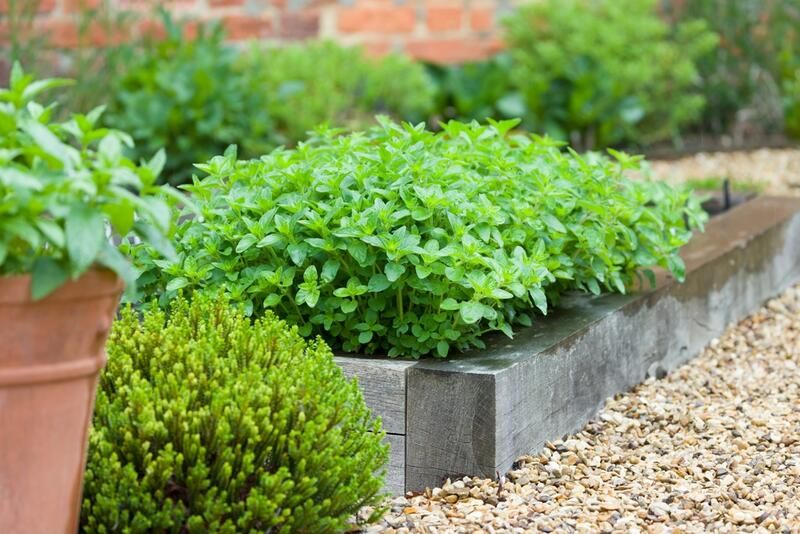
3. Avoid Overcrowding Hosta Companion Plants
The biggest mistake you can make when planting hostas and daylilies are overcrowding your new companion plants.
That's because both of these clumping perennials are the kind of plants that will just keep on growing and spreading when they're happy. If you don't give them enough room to spread out, they'll start competing with one another for nutrients and water—and this can potentially lead to disease or death.
So make sure to give each plant proper room for breathing by placing them at least 18 inches apart. And if you're planting them in groups, try to keep them in groups of four or five maximum.
4. Avoid Subjecting Your Plants to Long Hours of Morning Sun
Some plants are happy to be subjected to long hours of the morning sun, but others are not.
Hostas are shade ground covers, which means they thrive in partial to full shade. So, if your garden receives a ton of sun, it's best to plant them further away from the ground so that their root system doesn't get baked out by too much sun exposure.
If you have a garden space that gets plenty of sun in the mornings but then has a shade for most of the rest of the day, it's best to choose plants that thrive in those conditions instead.
5. Learn How to Create a Dynamic Color Scheme
The secret to creating an eye-catching garden does seem like an impossible task that only an experienced landscape architect can do, however, that might not be the whole truth. It is all in the palette!
You want your plants to be able to stand out from each other, so you need a variety of colors and textures that complement one another nicely.
The best way for this is by using hostas and daylilies with colorful foliage—both are easy-to-grow, come in an array of shapes, sizes, and bloom times (some are even evergreen).
Their variegated leaves can be used as border decorations or as accents in containers. They are also great for planting in low-light areas since they help brighten up dark corners and provide some much-needed color when there's little else around them.
This allows you to get creative with your planting scheme without having too much trouble finding what you need!
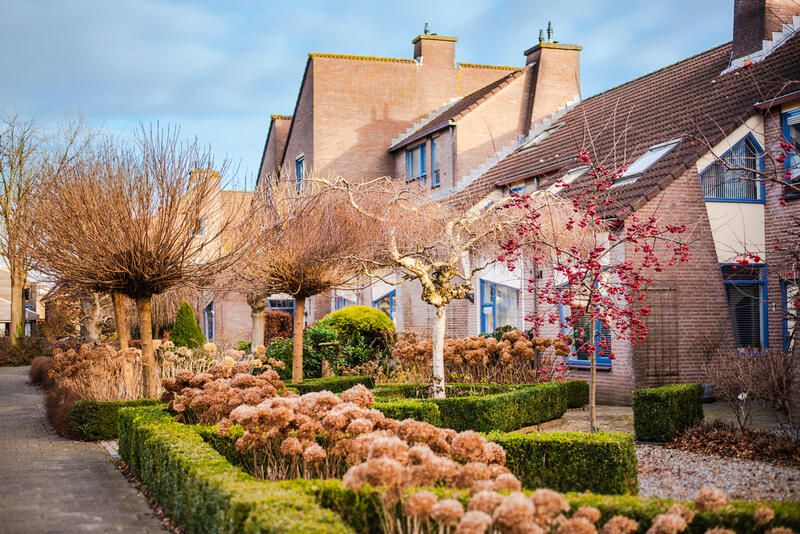
6. Encourage Healthy Growth and Prevent Pests
When you're working with hostas and daylilies, it's important to keep the plants healthy. They need to be fertilized often but only use a balanced fertilizer if you want to avoid damaging their roots.
It's also important that you water your plants correctly. Watering frequency will depend on the soil and weather conditions in which you live.
In general, it's best to water in the morning so that fungal diseases don't have time to grow overnight.
Even though many varieties of hosta are slug resistant, they're not completely resistant to all types of pests.
If you're looking to keep pests at bay, consider planting some ferns in your hosta garden. They're known for their ability to repel many insects and will help keep your hostas and daylilies safe from damage.
7. Use Hostas as Ground Covers
Hostas are a great ground cover and can make a nice border along a walkway or property line. They are also perfect for covering up bare areas in your yard.
Hostas can be planted in rows or clumps. If you're planting them in rows, choose plants with similar leaf size and color, as well as growth habits (upright versus mounding).
Planting these shade perennials together will help them form a continuous mass of foliage throughout the growing season.
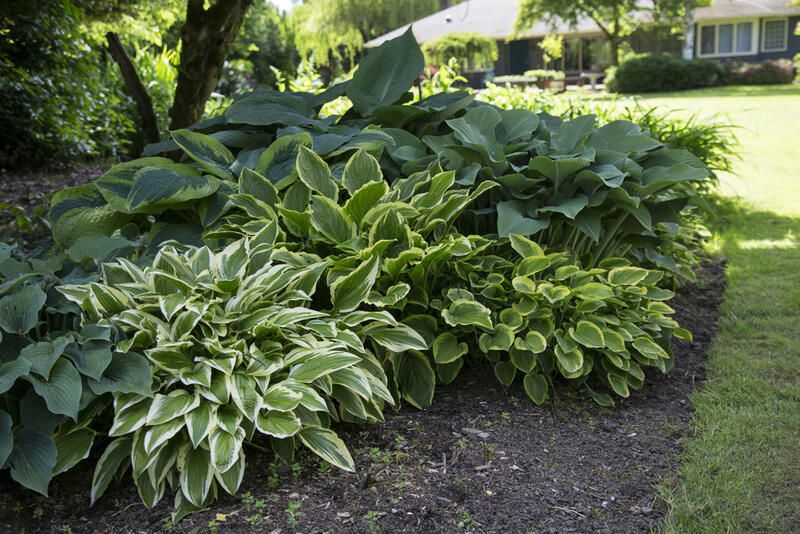
8. Don't Neglect Your Daylilies
When you're planning your daylily garden, it's important to keep in mind that these flowers can thrive in all kinds of conditions, but that doesn't mean that you should neglect them. Many plant combinations might seem immortal, but they aren't
Your daylilies will grow well in sunny areas or partially shaded ones and they adapt easily to moist soil or dry soil. Most importantly, they can be grown as perennials—meaning that if you plant them once, they'll come back every year by themselves.
Daylilies are generally easy to grow: just stick the roots into the ground at an angle so that they're not too deep (about 3 inches) and make sure there's no exposed dirt around the roots. You'll have pretty blooms on your hands within a few months!
However, overwatering them might subject them to a variety of diseases, including root rot, crown rot, and damping off. These are all caused by fungi that can enter the plant's roots and stems through tiny cracks or wounds.
If your daylilies have been subject to a lot of stress—for example, if you've overwatered them or planted them in the wrong type of soil for their needs—then they might be more vulnerable to these problems.
9. Don't Limit Yourself to One Companion Plant
If you're looking to add something to your garden, don't just choose a single plant. Instead, look for a pair or trio of plants that will work well together.
This will help ensure that your garden has a variety of different colors, textures, and shapes—all while making sure that everything is getting along in harmony!
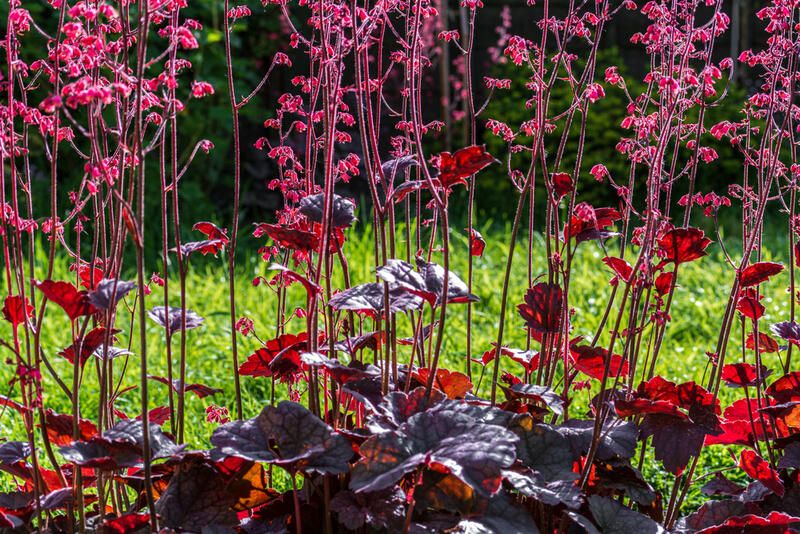
Here are some of your options:
-
Coral bells
-
Lady's mantle
-
Perennial geraniums
-
Elephant ears
-
Japanese forest grass
-
Spring bulbs
Firstly, let us talk about coral bells: coral bells thrive mostly in shade. The best part of growing coral bells is that they’re perennial, which means you can plant them once and then enjoy their beauty for years to come.
This also means that they’re quite hardy and drought-resistant, making them an excellent companion plant for hostas.
Lady's mantle adds lovely foliage and is another great companion plant. It is a shade-loving perennial that will grow in partial sun to full shade. It has lovely foliage, perfect for a hosta companion plant.
10. Add Crushed Egg Shells to Deter Deer Away From Eating Your Hostas
If you want to keep deer away from your garden, crushed eggshells are a great way to deter them. The egg shells are a natural repellent that can be used in the garden, and they won't hurt the environment or people.
Eggs are a staple in many kitchens. You can always save eggshells and crush them up into small pieces, or powder, before scattering them around plants.
This will help you protect your plants from being eaten by deer. You can also use other waste products like apple cores or orange peels for this same purpose!
11. Mulch Over Hostas to Keep Weeds Down and Moisture in During Dry Spells
One of the easiest ways to make any garden look good and healthy is by using mulch.
Mulching is a great way to protect your landscape from drought, especially if your plants can't grow in full sun.
It helps keep moisture in the soil and weeds down during dry periods.
If you have hostas or daylilies in your garden, then adding mulch over them will help keep moisture in their soil during dry spells as well as keep weeds from invading their space!
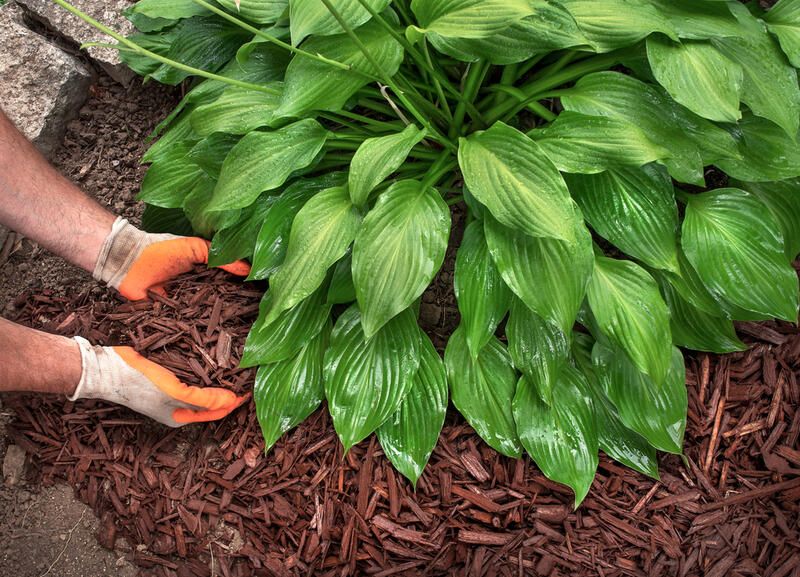
12. Use Hosta Leaves as a Fertilizer for Your House Plants
Hosta leaves are a great fertilizer for houseplants. Just add them to your soil and they will release nitrogen into the soil, which is essential for healthy growth. You can also just throw a handful of hosta leaves into the compost bin and your plants will benefit from them as well!
Hosta leaves are also great at controlling weeds in your garden. You can use them on your ferns, African violets, orchids, and other flowering plants to improve their health and keep them looking beautiful!
13. Grow More Hostas by Cutting Off Their Flower Stalks
Hostas are great plants to grow in your garden. They can be used as ground covers, borders, or even accents if you want something colorful and unique. However, they do tend to get leggy and need frequent pruning to keep their shape.
If you want more hostas without having to dig up your old ones and plant them elsewhere, simply cut off the flower stalk before it blooms!
Hosta flower stalks can be used as a method of propagating your plants. Just cut them off when they start growing and place them in water, where they will begin to root.
After a few weeks of growing new plants from your hosta leaves, you will have plenty of new plants for your garden.
14. Plant Some Hostas Near a Retaining Wall
Hostas are a great addition to the retaining wall in your garden. They provide a beautiful contrast of color and texture, and they can also soften the look of an otherwise harsh concrete retaining wall.
Hostas are low-growing plants. This means that they won’t take up much space and will help to give your garden more dimension.
If you have a large, flat yard with no trees or other natural features, planting hostas near a retaining wall can bring some life back into your lawn.
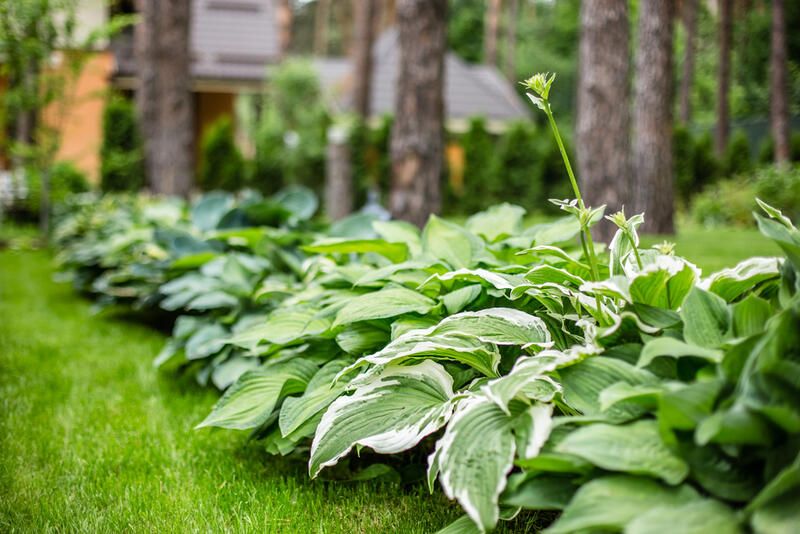
15. Use Hostas and Daylilies as Ground Covers
Hostas and daylilies are both beautiful plants that will help to soften the look of your yard. They’re perfect for planting near the edges of your property or at the bottom of a hill where they can grow up over time.
If you have a large space that needs to be covered quickly, hostas and daylilies are both good options. They can be planted in large clumps, which will help fill in any empty patches of dirt. Both plants are also low-growing and will only reach about 6–8 inches tall when mature.
They’re great for covering up soil that has been disturbed by construction or other landscaping projects.
Enjoy The Beauty Your Garden Has To Offer!
Hostas and daylilies are a must-have for any shade garden. They make great companions, provide year-round color, and require very little maintenance.
Hostas can also be used as a ground cover or to create a low-maintenance landscape and growing hostas can be extremely beneficial to your other plants.
Just remember to keep your soil evenly moist and harness the beauty of various types of hostas.
Finally, if you're considering building a shade garden from scratch, don't hesitate to contact the experts at ShrubHub! We can help you create the garden of your need and with only 30% of the budget you need to hire a local contractor!


